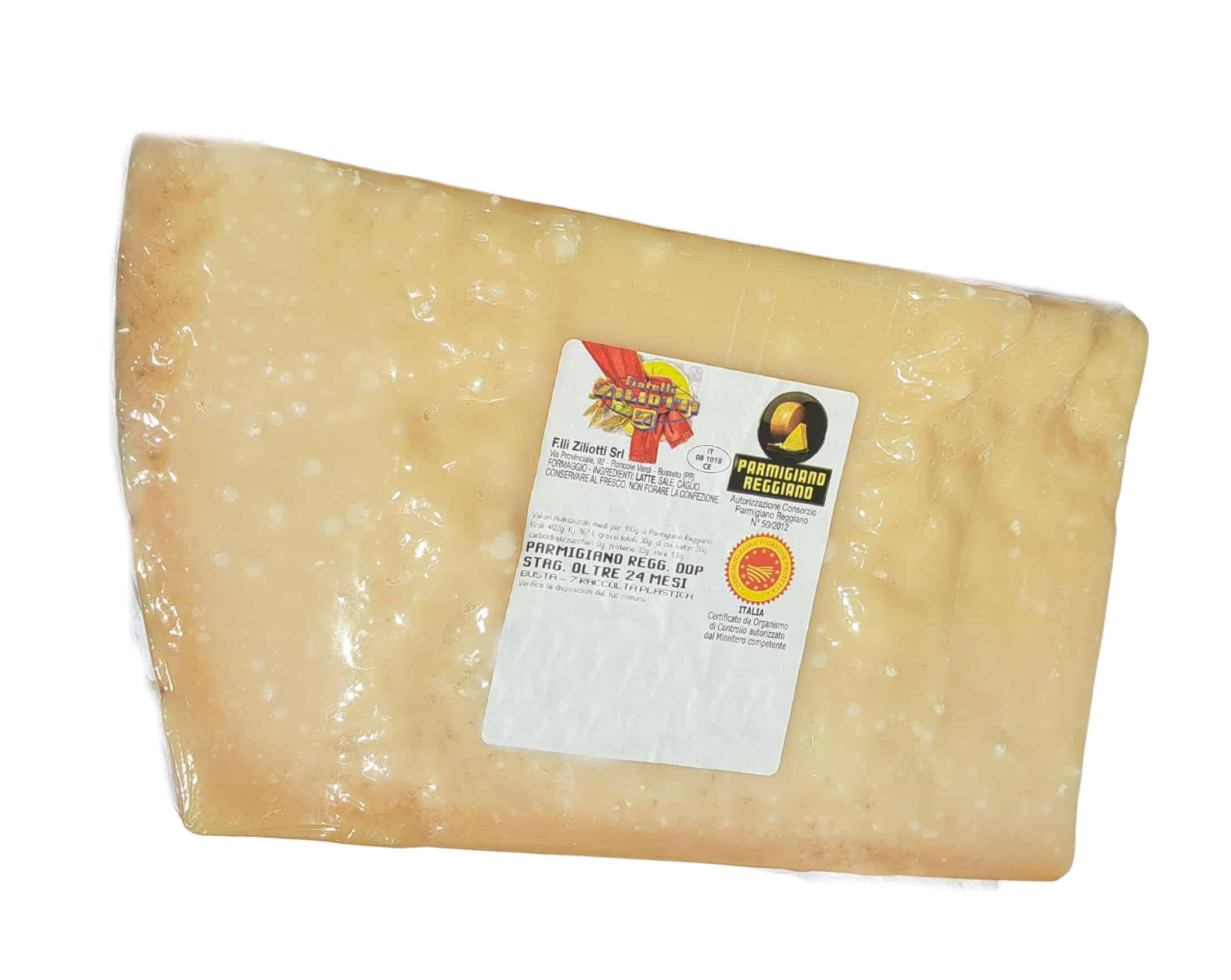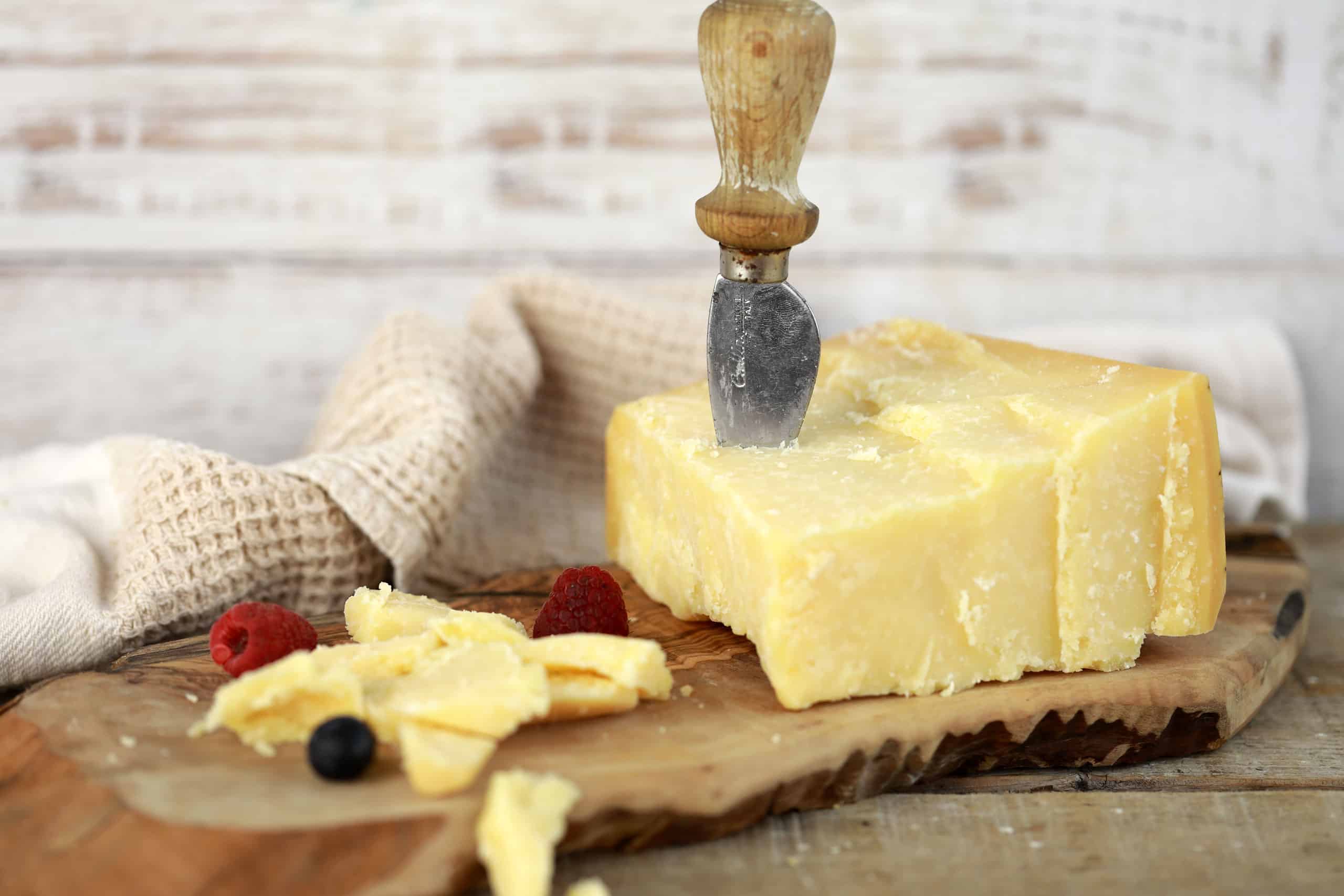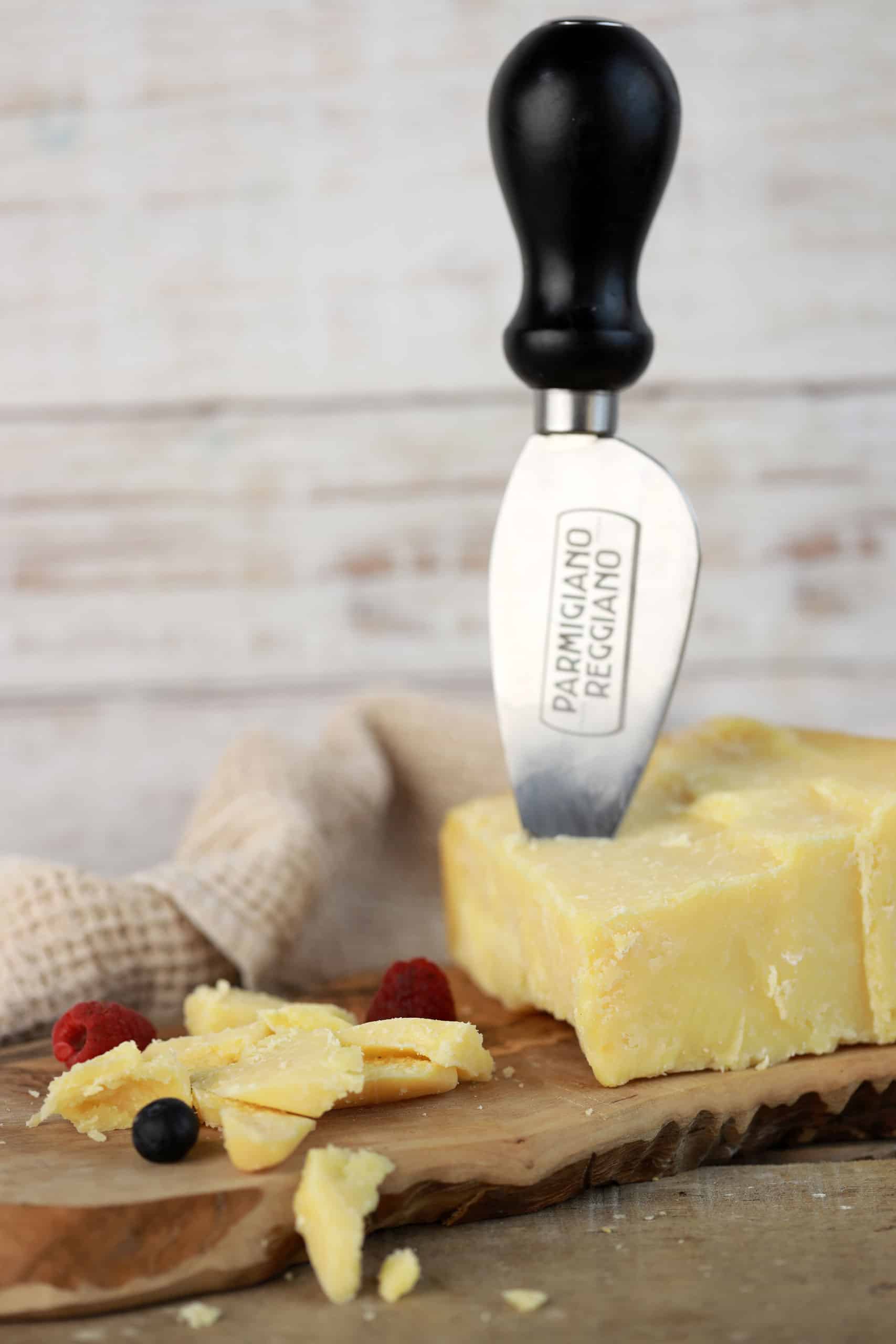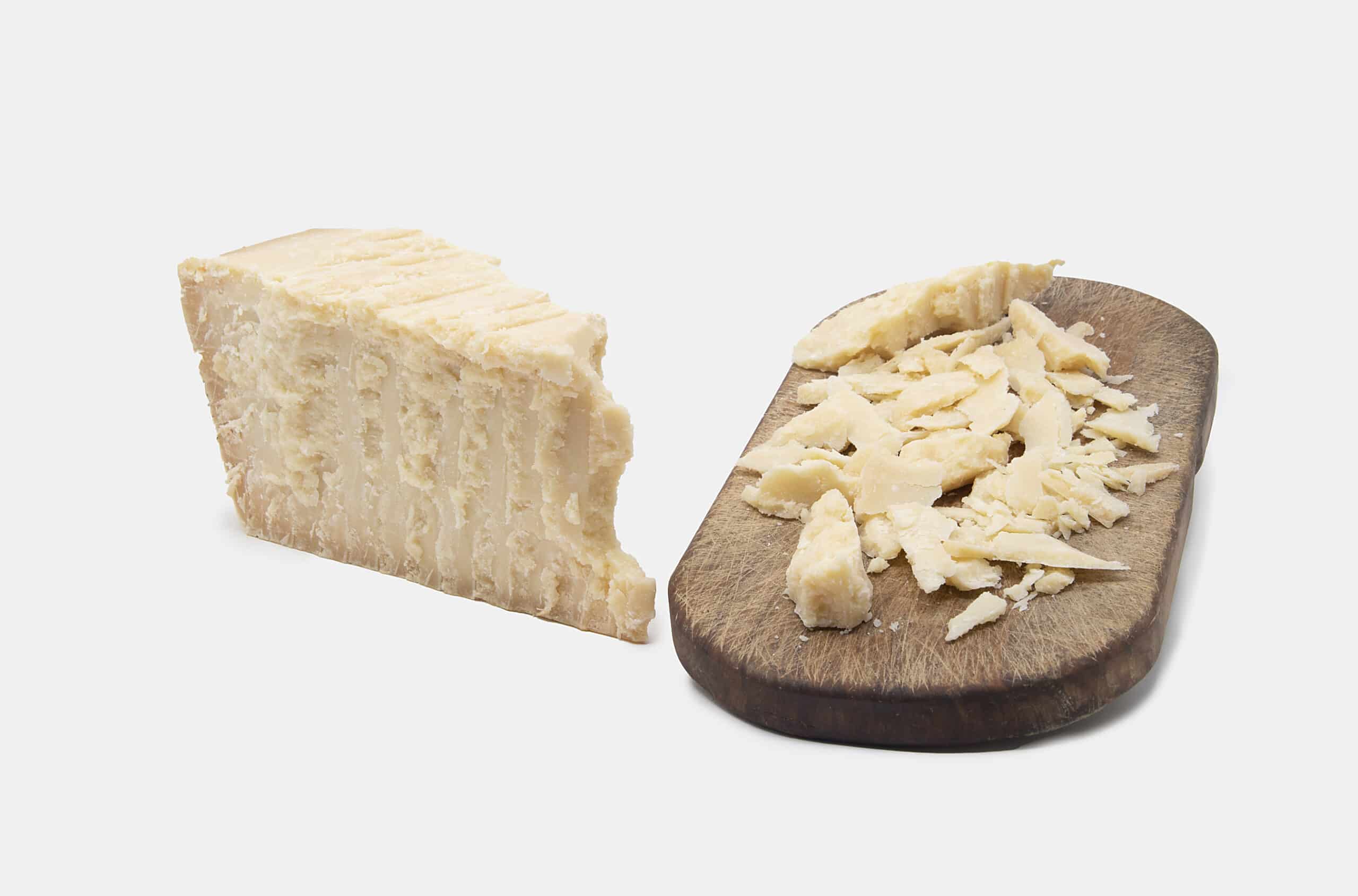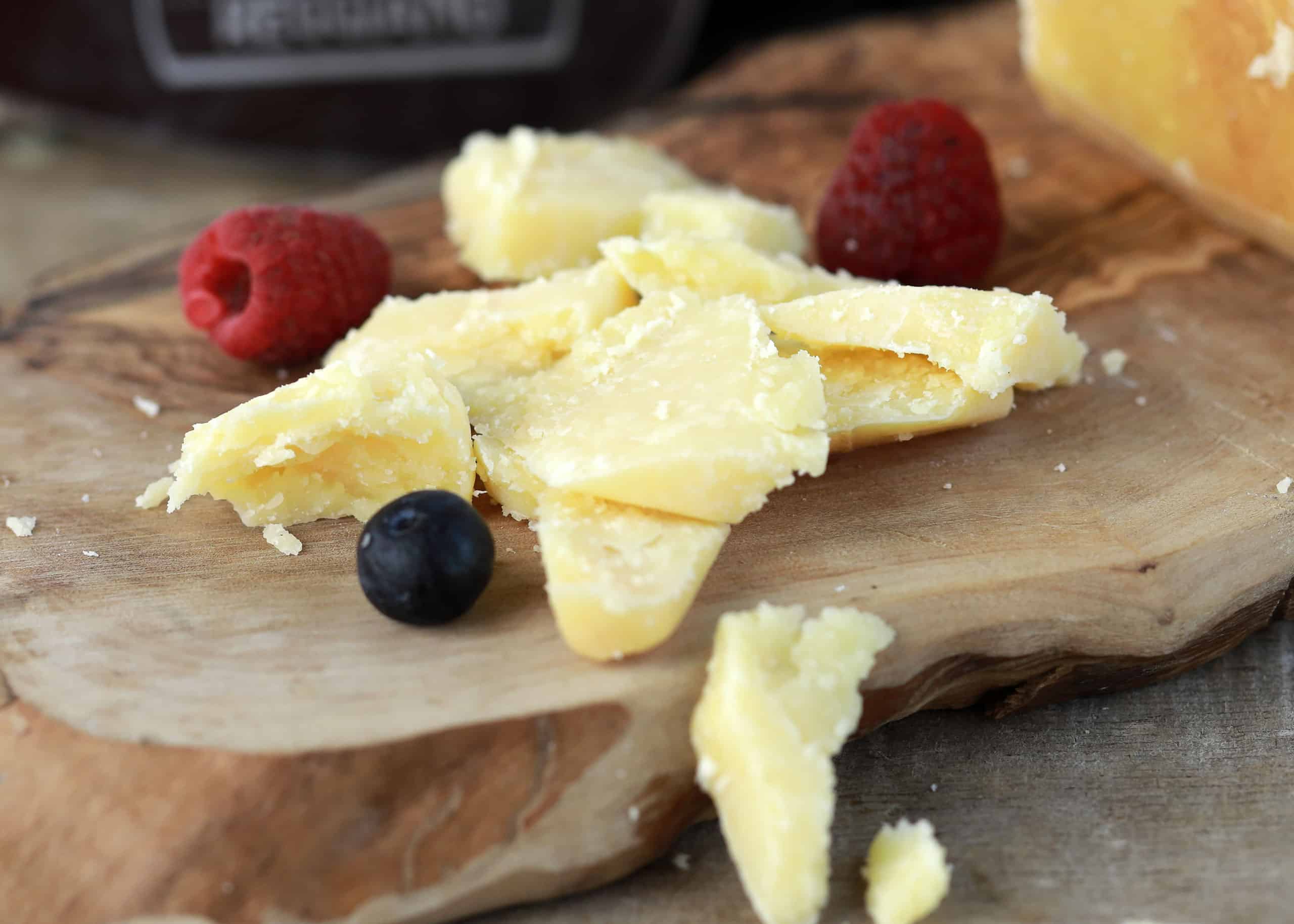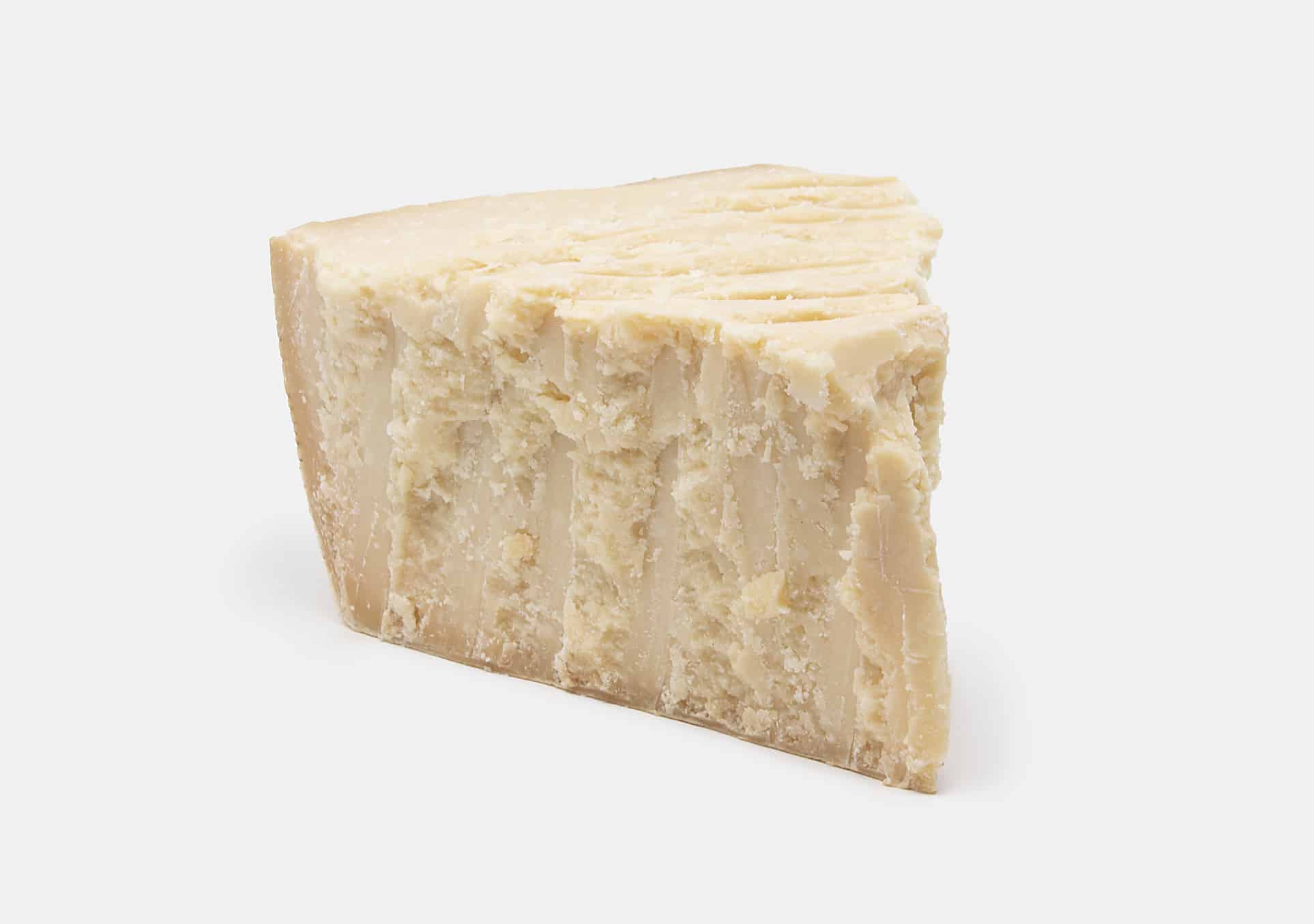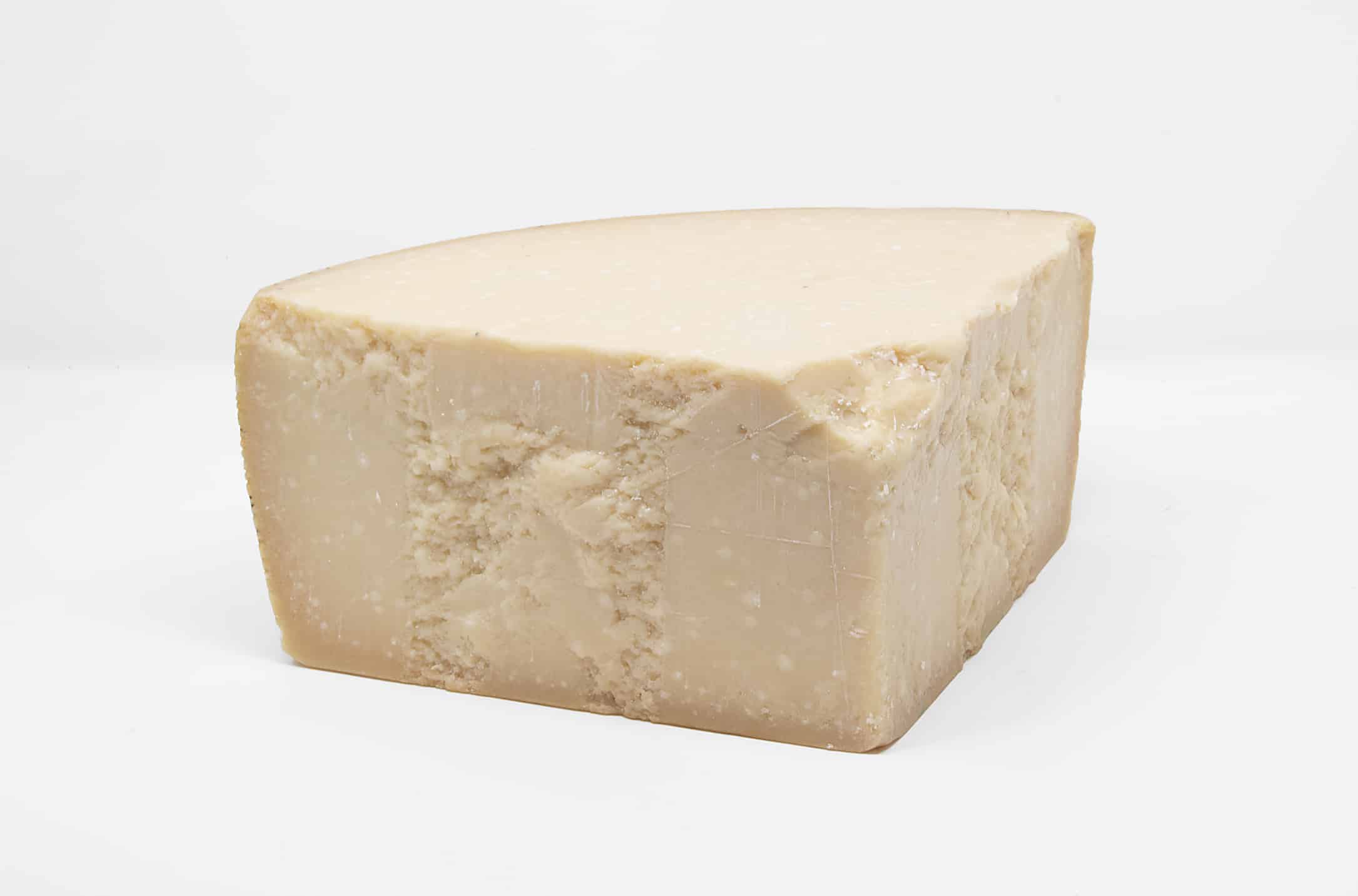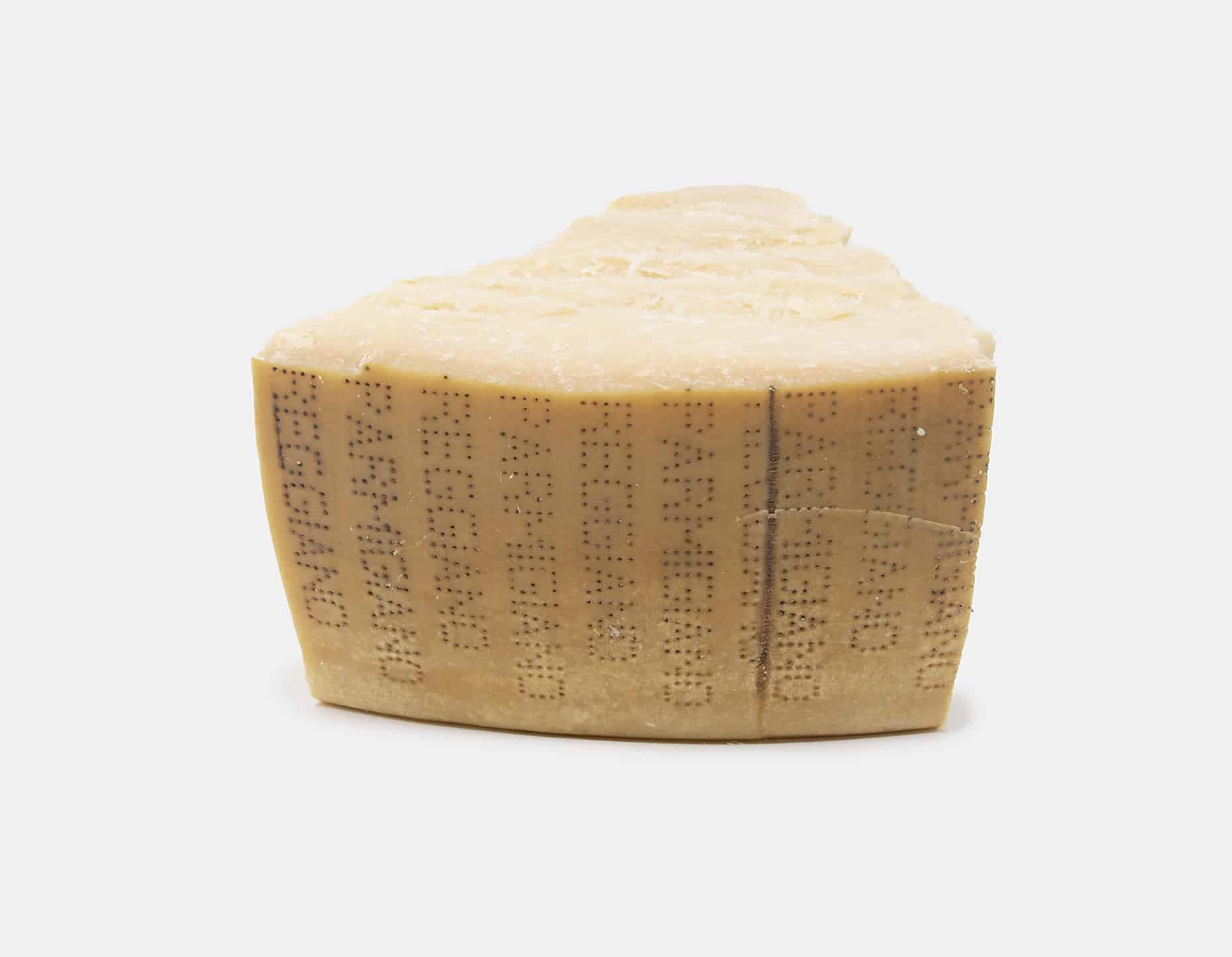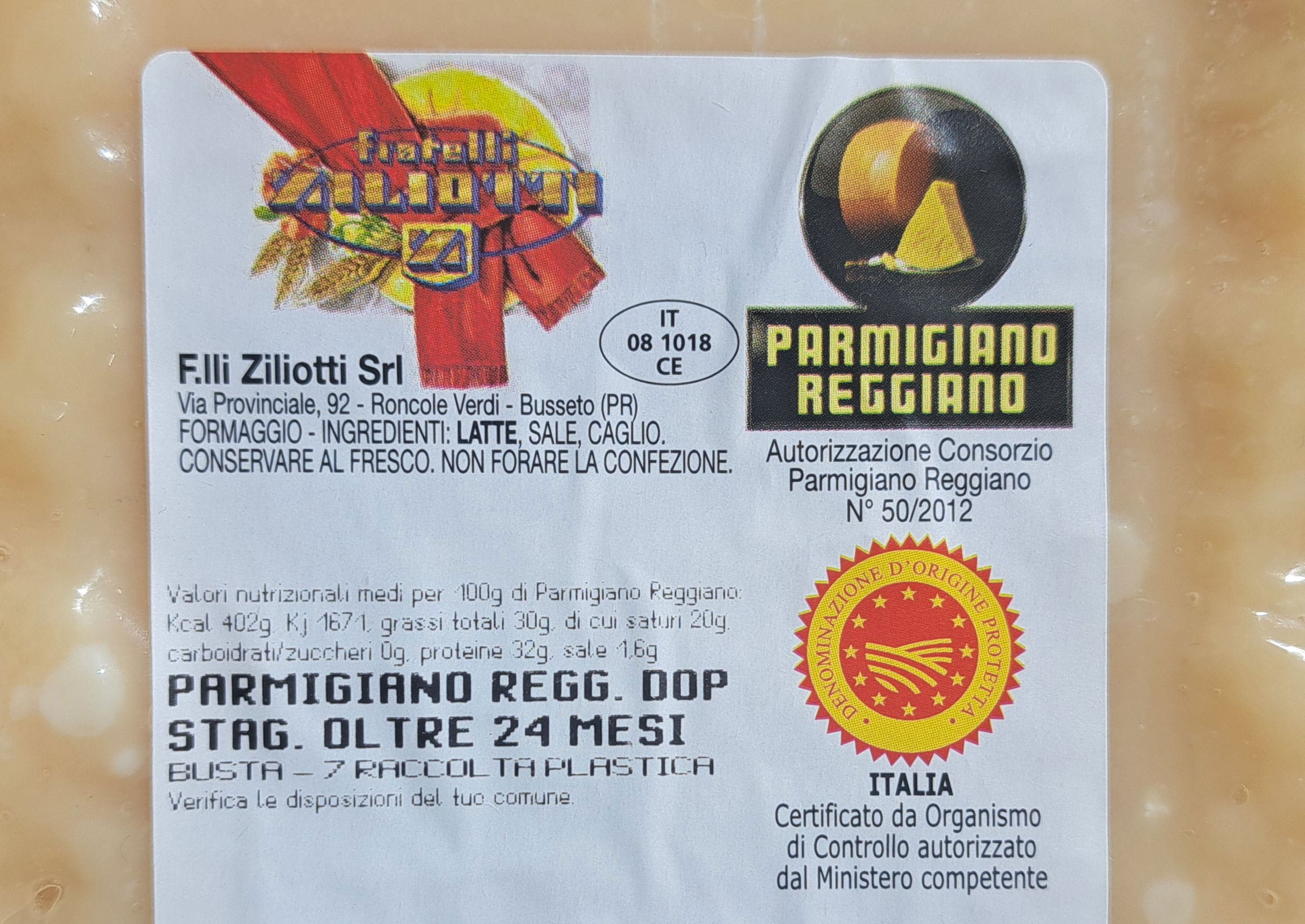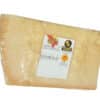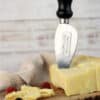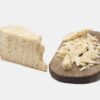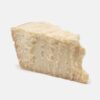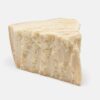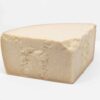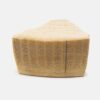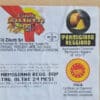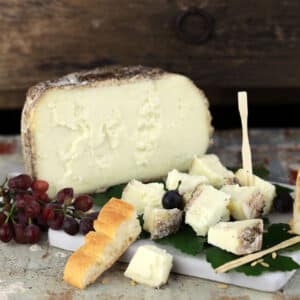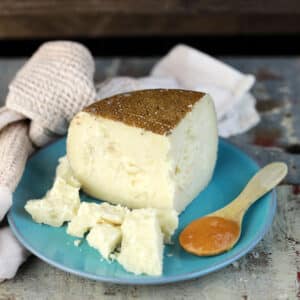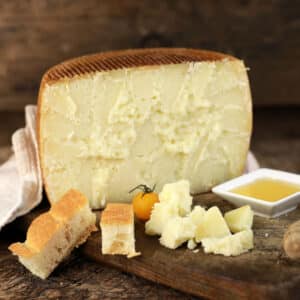Considered all over the world as the undisputed “king” of Italian cheeses, Parmigiano Reggiano, is a Protected Denomination of Origin (PDO) cheese whose production area mainly includes the Provinces of Parma and Reggio Emilia – which compete, as evident, to define its name – but also the territories of the capitals of Modena, Bologna and Mantua.
Always a symbol of our food excellences and the undisputed testimonial of quality made in Italy, Parmigiano Reggiano is a hard cheese whose consistency varies according to seasoning: specifically, our Parmigiano Reggiano 24 months presents the typical granularity of a long seasoning and a perfect balance between friability and solubility that guarantee “softness” on the palate and a taste immediately recognizable by the characteristic notes sweet and tasty at the same time. In fact you can perceive notes of fresh fruit and citrus fruits and a particular aftertaste of dried fruit.
Processing
This skimmed milk is then mixed with whole milk (milked the same morning) and placed in the characteristic copper tubs with the shape of upturned bell together with veal rennet and grafting serum, without the addition of any additives or preservatives.Around 550 liters of milk are required to produce a single form of Parmesan.The mixture thus composed begins to coagulate within ten minutes. It is only at this point that we pass to the actual cooking at 55 °, at the end of which all the granular grains are deposited on the bottom of the bell, in a single compact mass.In less than an hour, the dairy masters extract this caseous mass that is cut into two parts and placed inside a mold that will give the cheese its classic shape. Each form created in this way is then marked with a special progressive number which has the function of a true and identical “document”.After a few hours, the shapes are branded with the month and year of production, the matriculation number of the dairy that produced them and the unmistakable “written dots” that runs through the entirety of their circumference .
After a few days the forms are then left to soak in water and salt for about a month so as to give them a perfect salting.
Seasoning
In the quiet of quiet and ventilated warehouses, the shapes are left to mature on long wooden planks: over time the external part dries slowly to form a natural crust and therefore perfectly edible. In this regard, there are many traditional recipes that include the use of parmesan crust in the kitchen: the grandmothers add them to soups and vegetable soups for example, but they are also perfectly suited for feeding our pets because they do well to the teeth of dogs and cats and bring an excellent amount of natural calcium.
Special colored stickers are used to distinguish the different maturation periods.
The 18-month forms, for example, have lobster-colored stamps.
The aging of over 22 months is instead highlighted by placing a silver cola stamp on the forms, while for periods of more than 30 months, gold-colored stamps are used.
Parmigiano Reggiano: history
For over 80 years, to be exact since 1934, Parmigiano Reggiano is guaranteed by a special Protection Consortium which also establishes the precise disciplinary of Protected Designation of Origin, ensuring that the highest quality and organoleptic standards are always respected by all producers.
But the history of Parmigiano Reggiano does not end with the twentieth century: in fact, over nine centuries, this cheese is present on our tables.
Its origins date back to the twelfth century and have as a reference area the areas to the left of the river Reno (the current provinces of Parma, Reggio Emilia, Modena, Bologna) and south of the Po (in the territory of Mantua). The first written testimonies go back to the same Giovanni Boccaccio who in his Decameron tells us that already around 1200, 1300 Parmigiano Reggiano had reached what is still its particular typification. It is hypothesized that its original recipe – probably already then old in a few centuries – was very similar to that of another cheese produced in the area and bearing the name of “piacentino”.
Ingredients
MILK vaccine, rennet, salt.
Inedible crust.
Keep in a cool place.
Produced and packaged in the establishment IT 08 708 CE.

